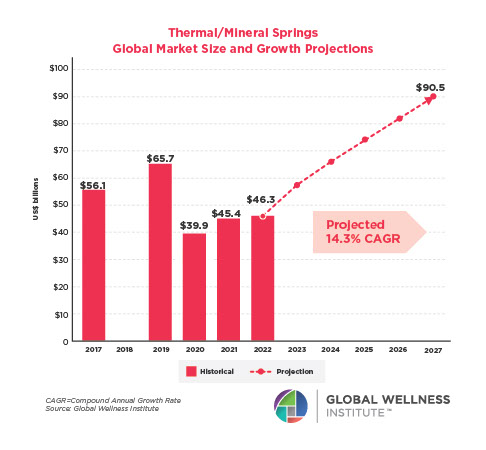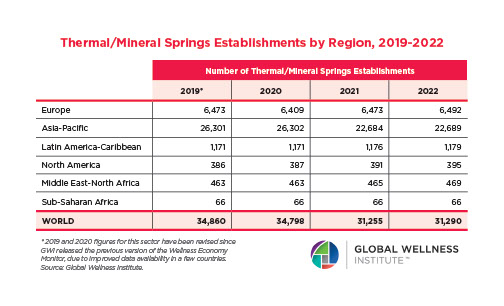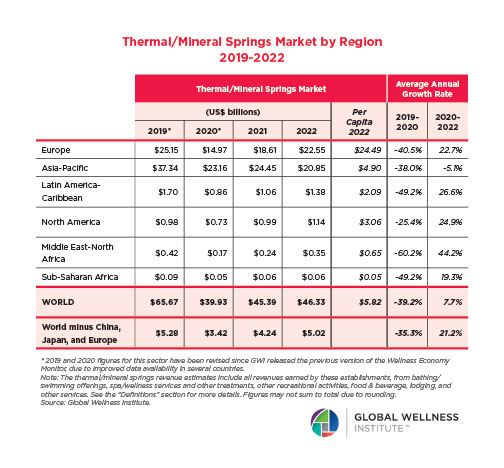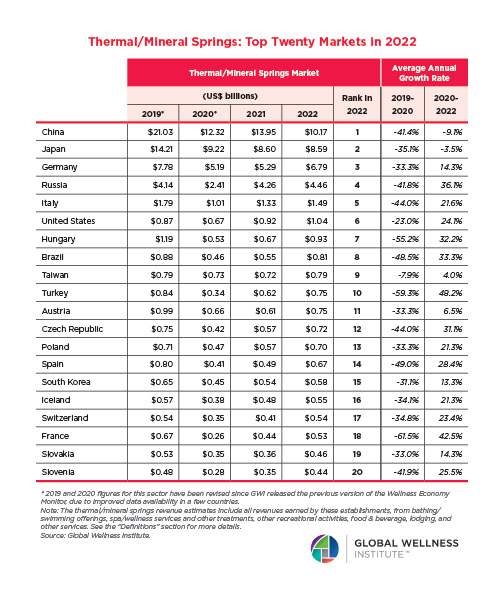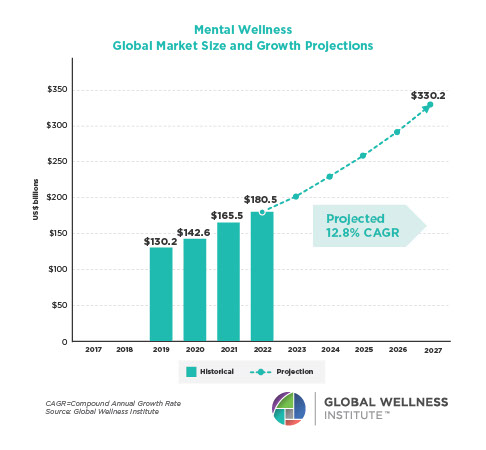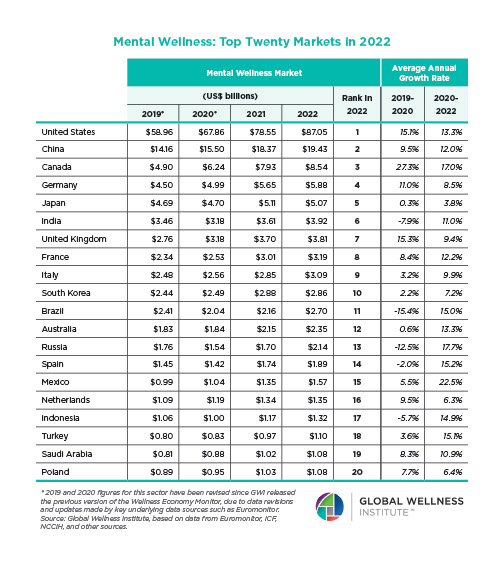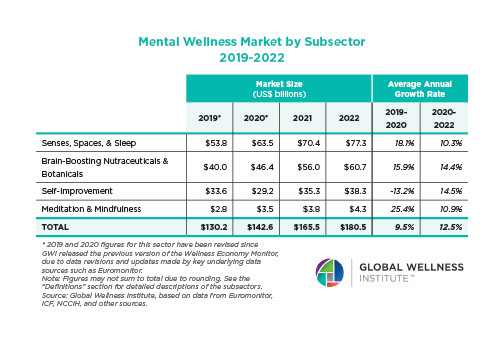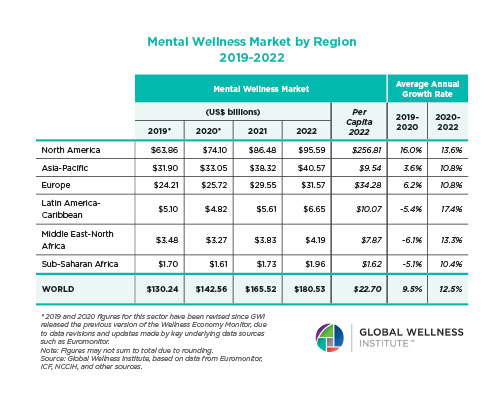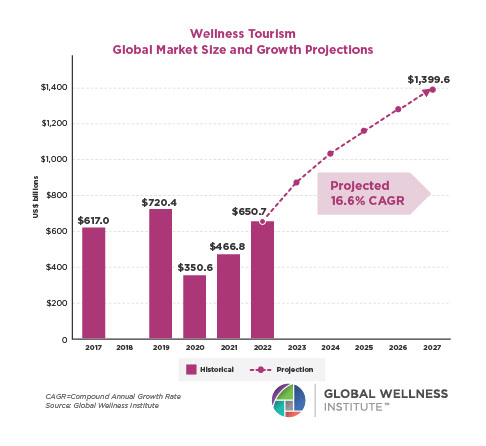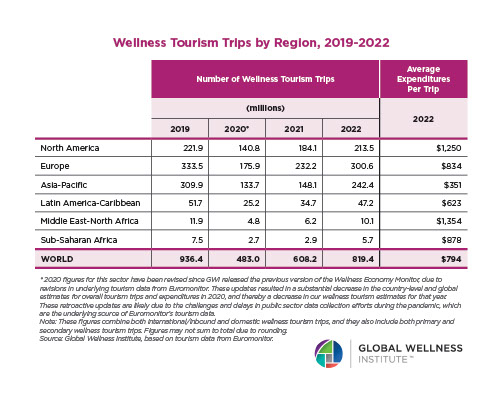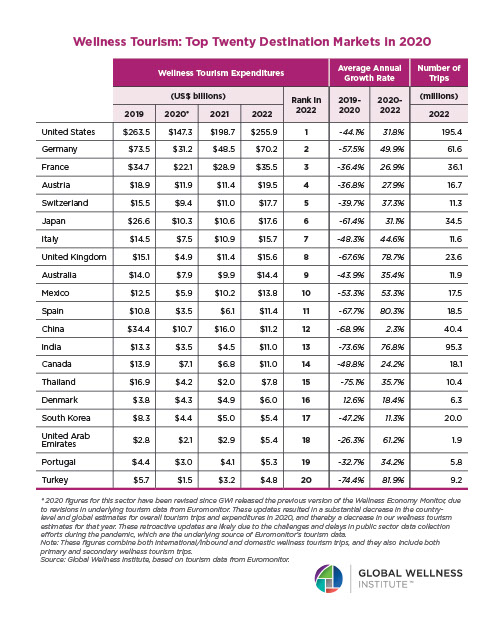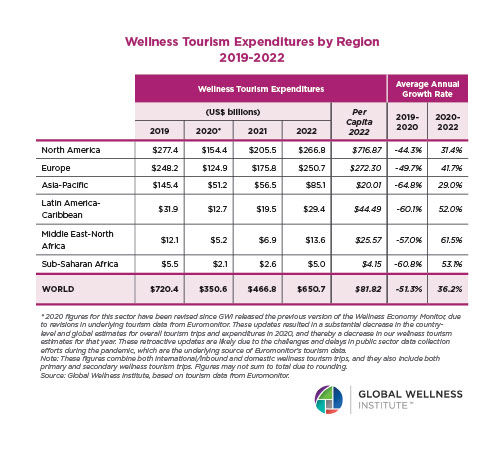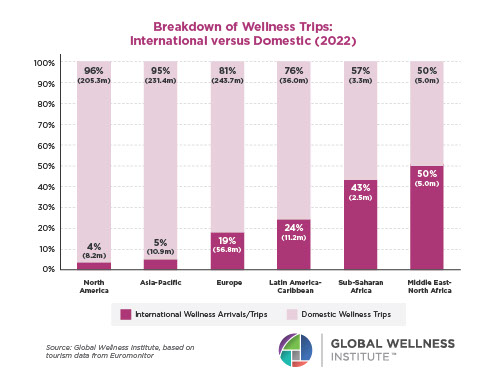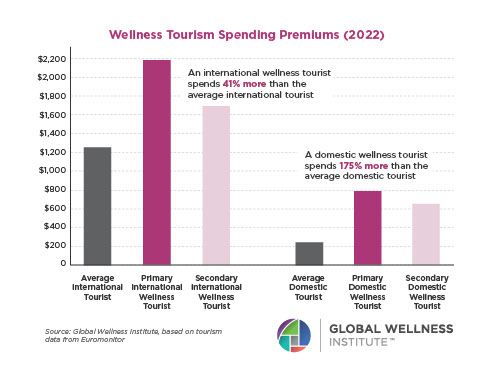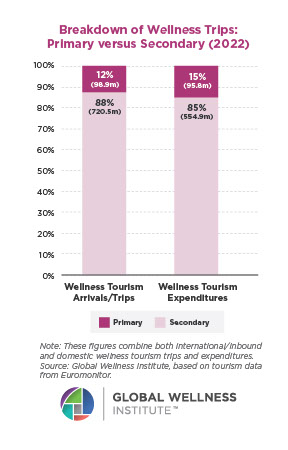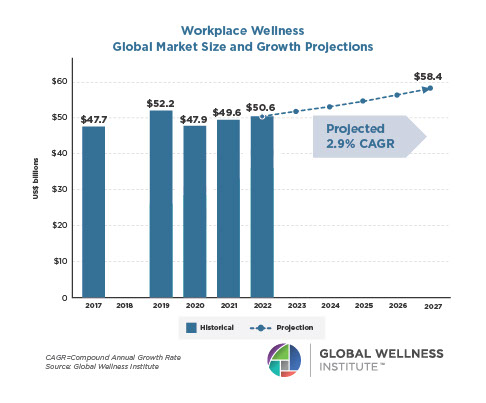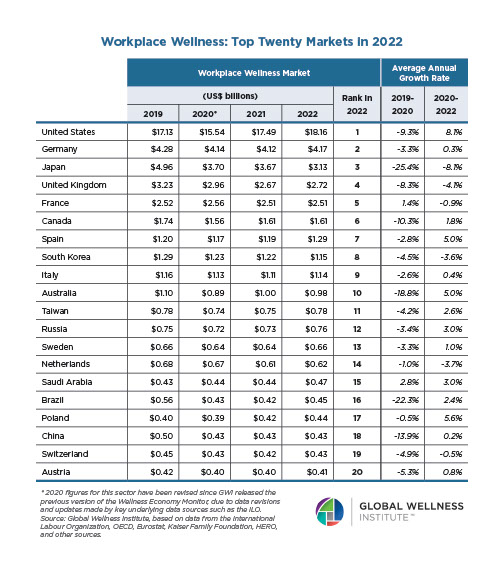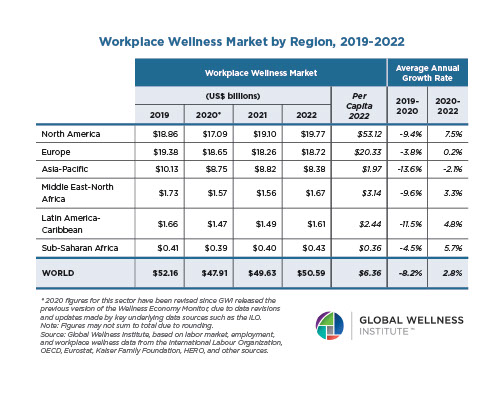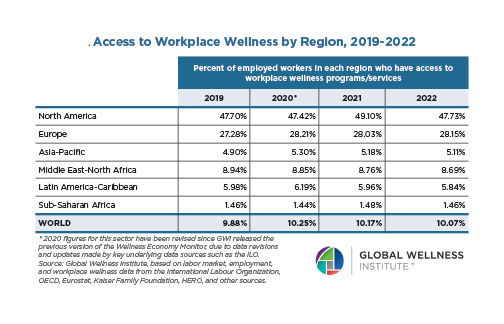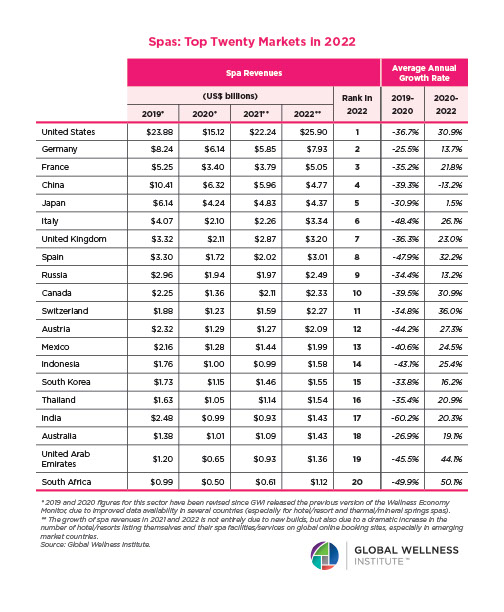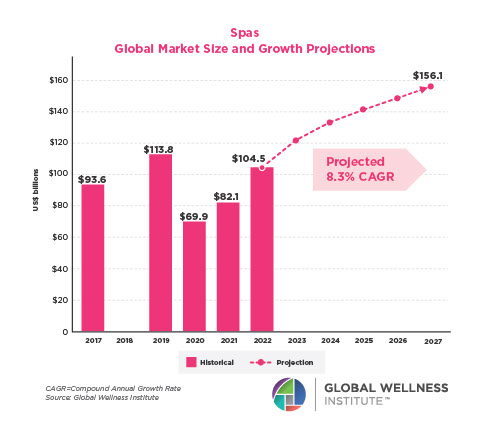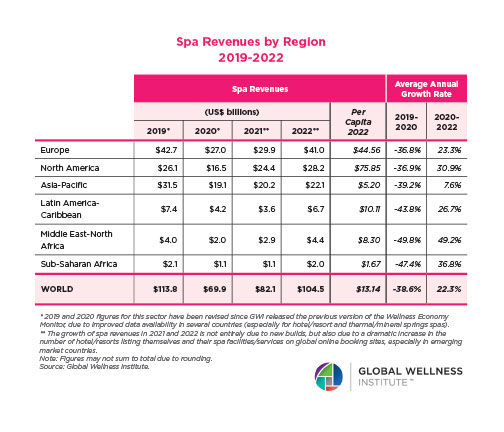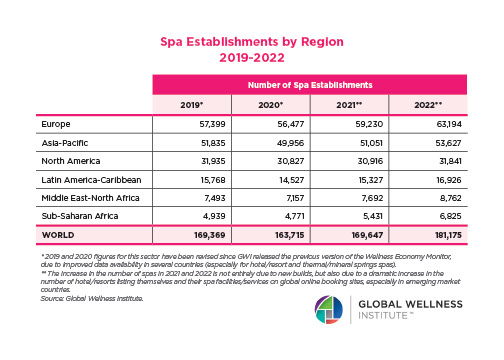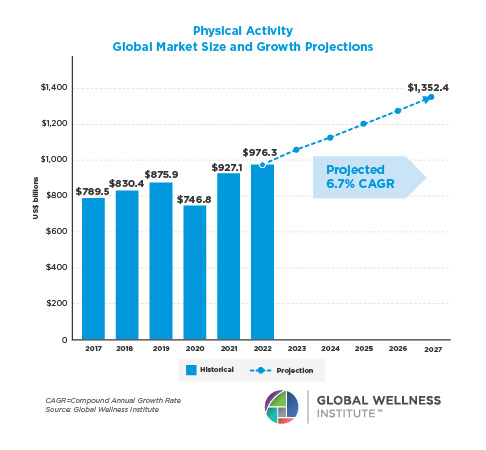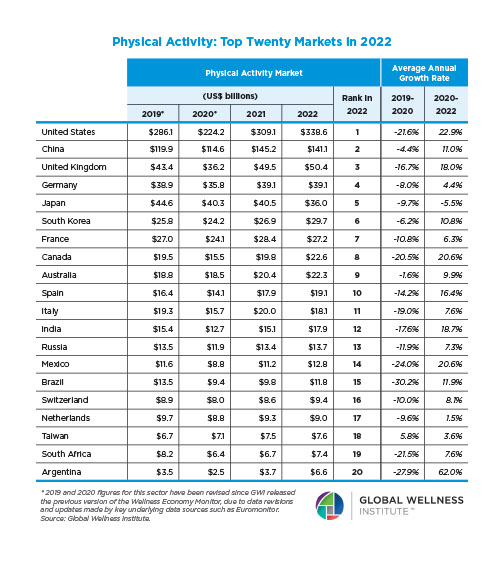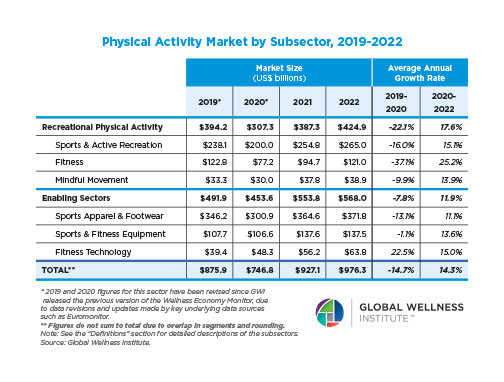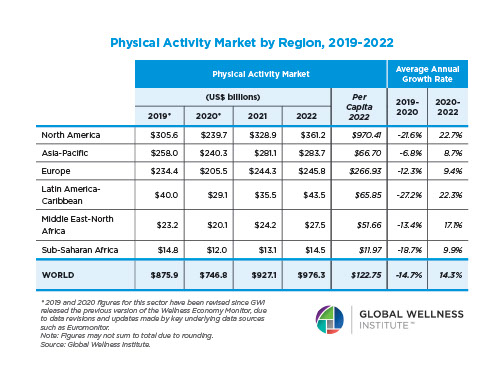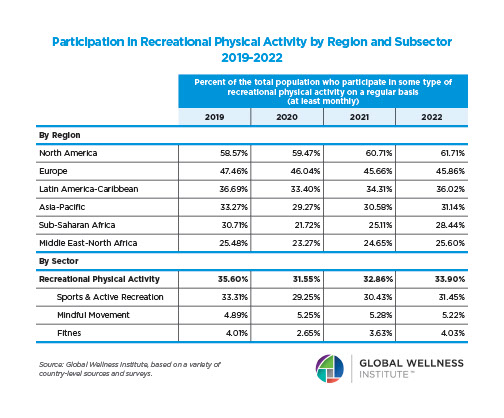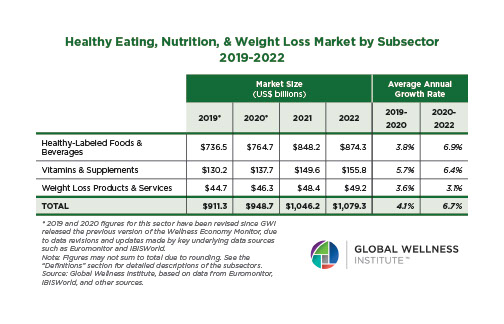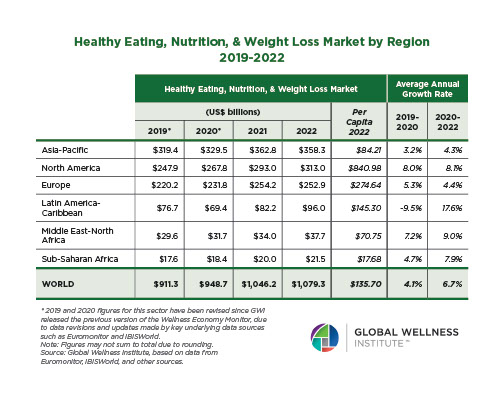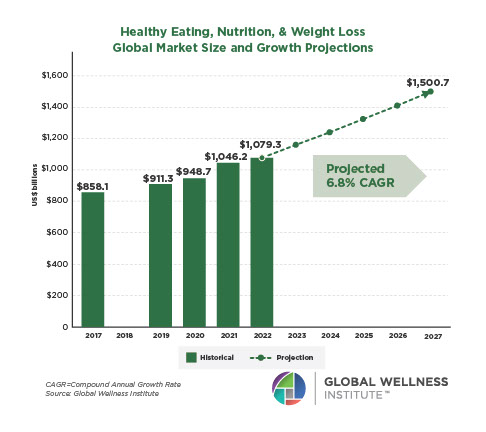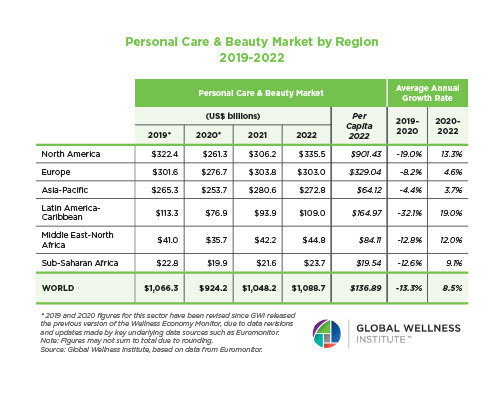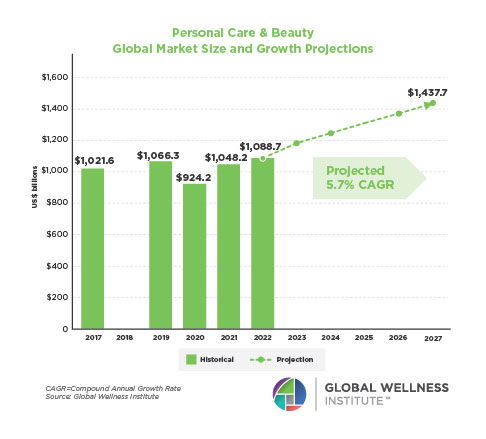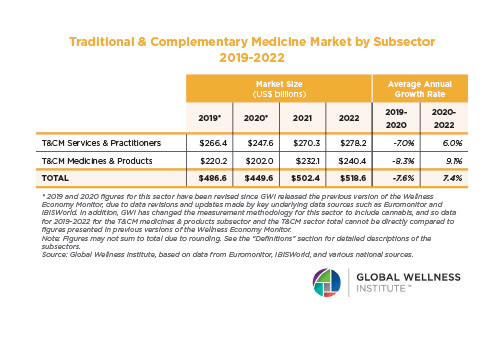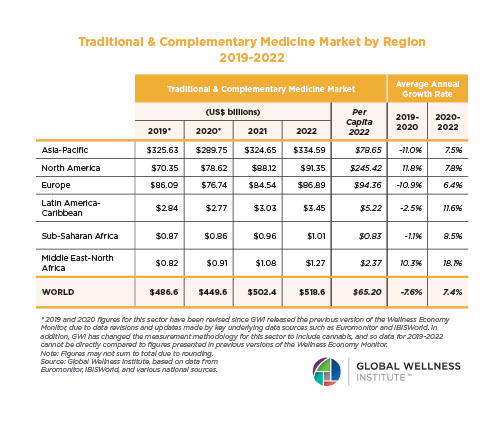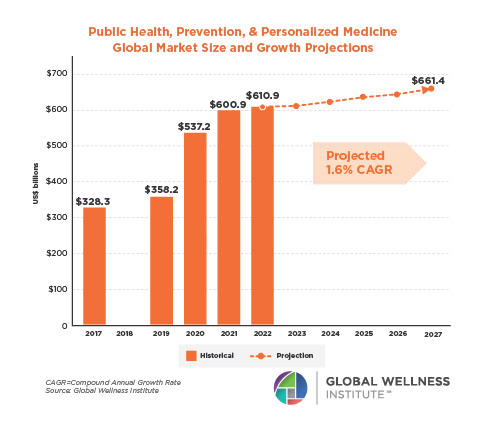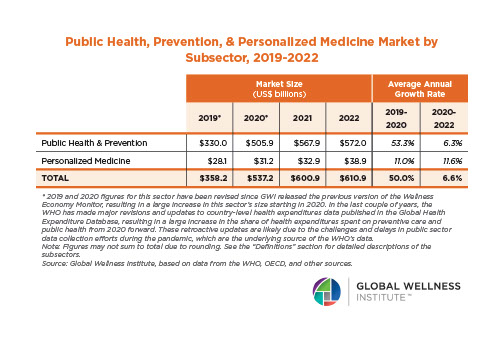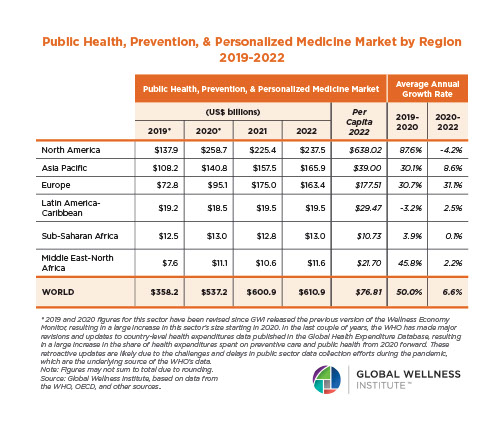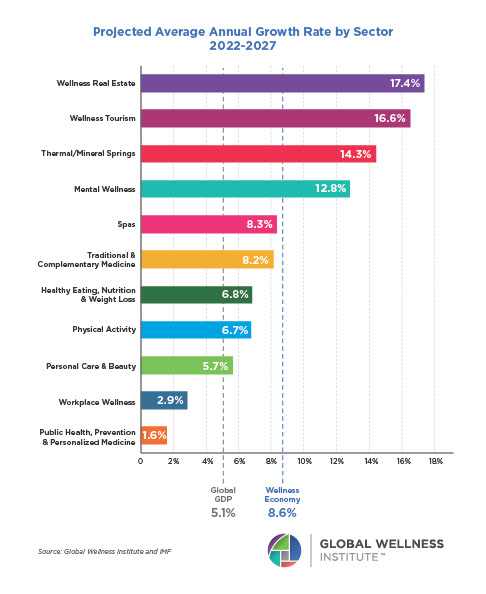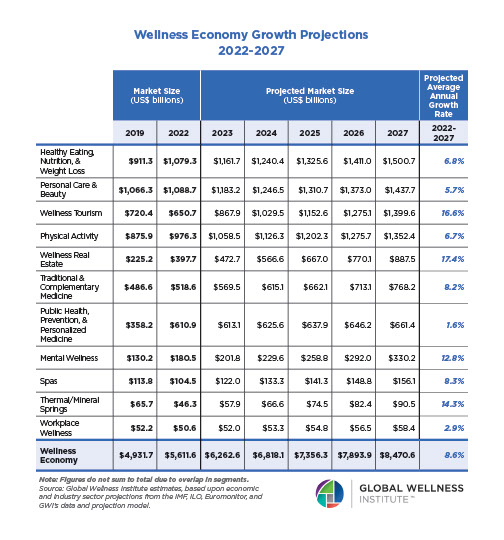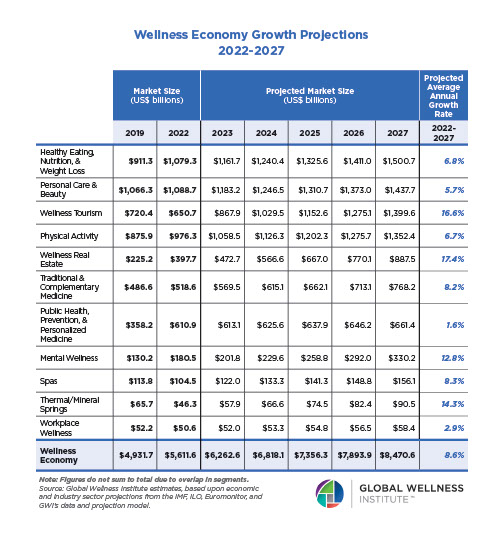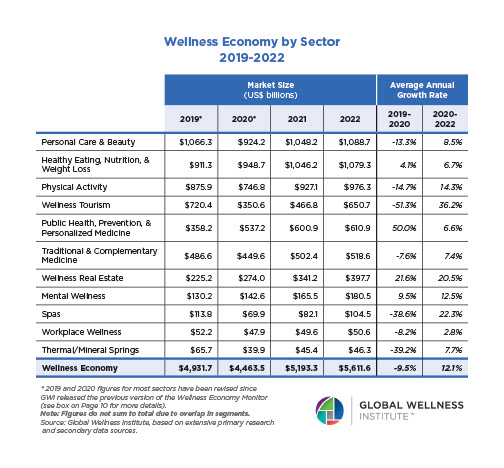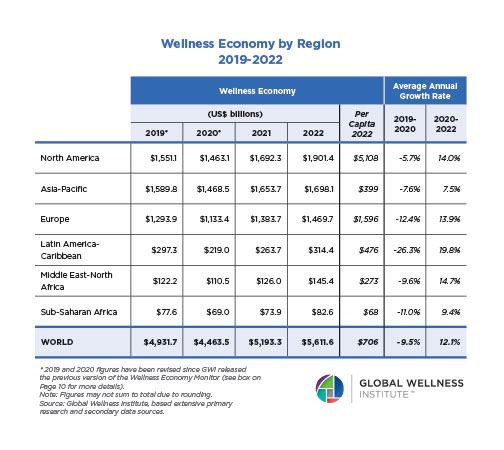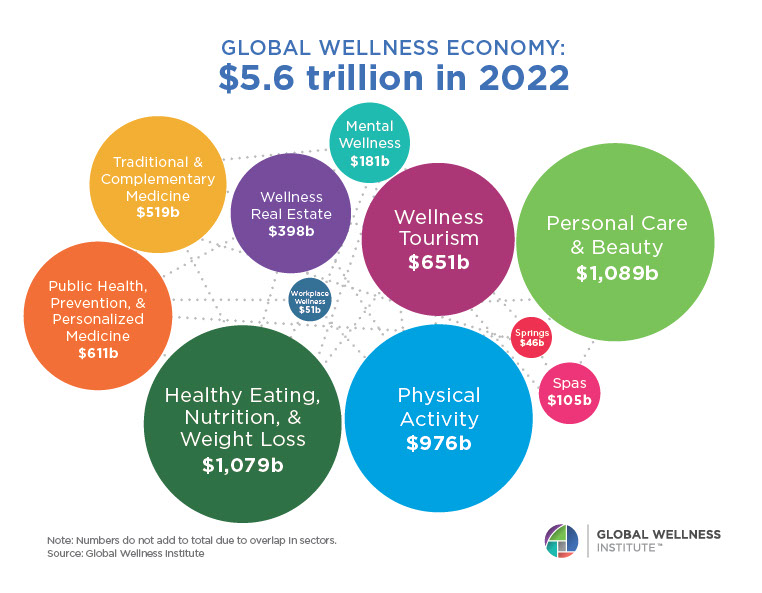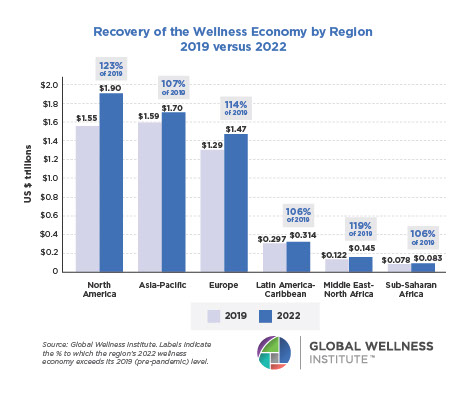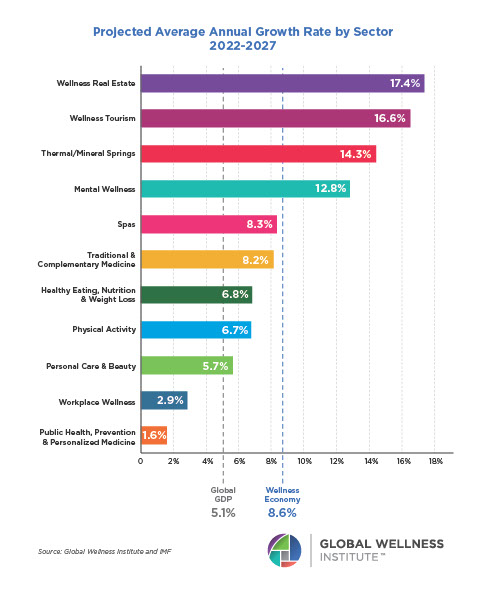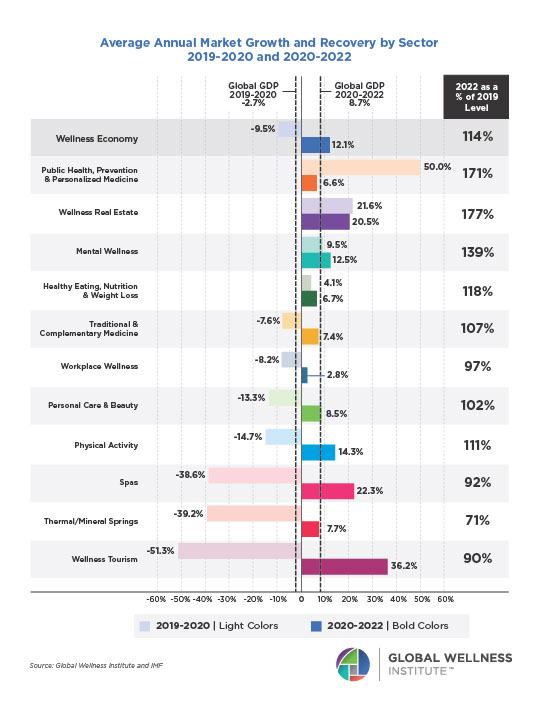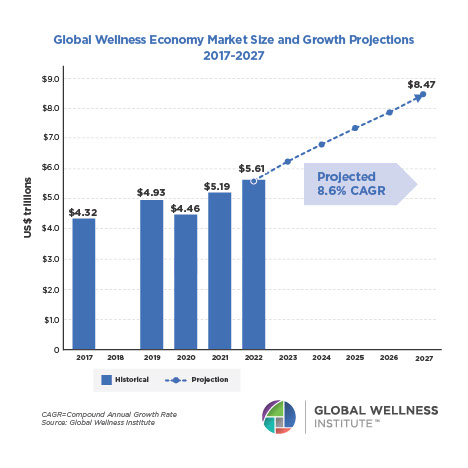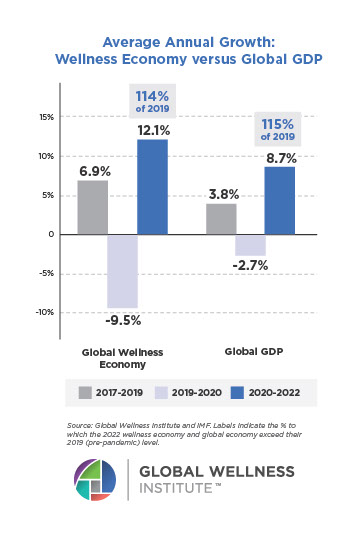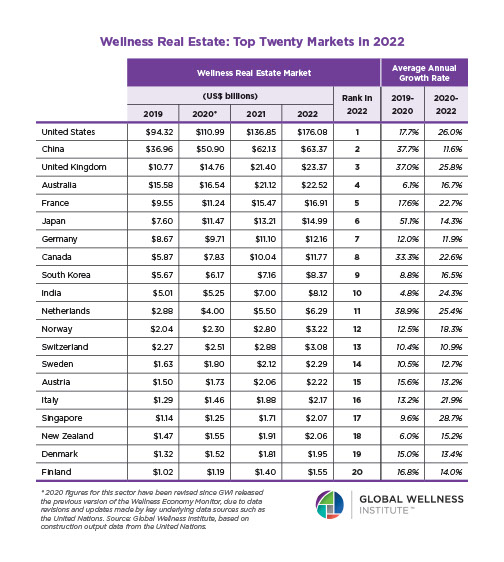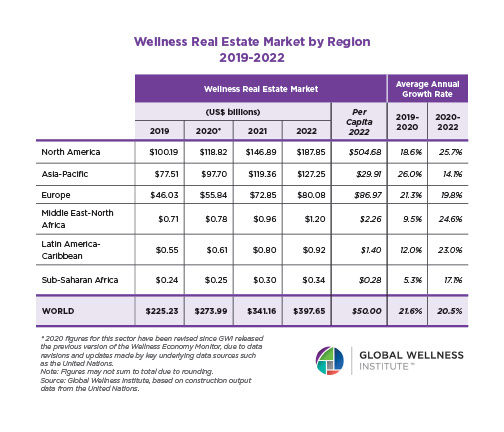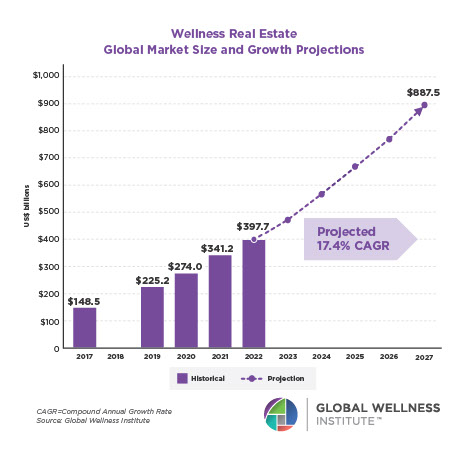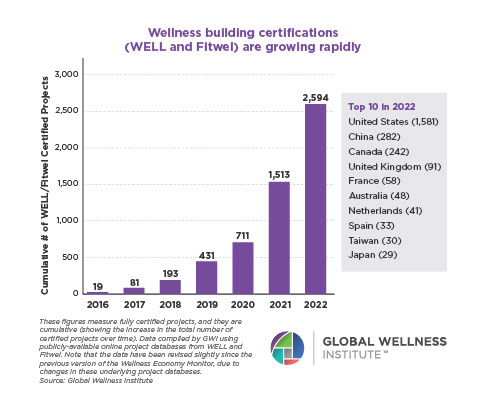Consulting Best Practices Initiative
2025 Trends
![]()
The wellness industry continues to evolve rapidly, driving significant trends that shape business strategies and consumer expectations. The following trends identified by the Consulting Initiative highlight key considerations for wellness industry stakeholders aiming to remain competitive and innovative.
TREND 1: Pressure to be First Requires Expertise
The wellness industry is getting so much attention, especially with a renewed focus on hydrothermal and bathhouse components and a growing desire to explore longevity and recovery experiences. However, many of these concepts have not been tested over time, and thus, the ROI is not easily forecasted. Sometimes, there is a reason no one else has opened the type of business that is envisioned in a particular location!
With an industry rapidly growing, as wellness becomes more transversal, there is pressure to be the first to “slap” wellness onto each concept or company. While modern technologies and approaches show great promise, as consultants, we sometimes see the need to balance moderation and risk management against the entrepreneurial spirit. This becomes especially apparent in the spa design phase. The number of treatment rooms, treadmills, pool seating, lounge seating, and sizes of all thermal areas are predicated upon careful calculations about the market. It’s not as simple as X treatment rooms per X guest rooms!
TREND 2: The Rise of Recovery-Focused Wellness
The topic of wellness in spas is becoming increasingly diverse and multidimensional. In addition to physical relaxation and mental wellness, spiritual and social aspects also make their way onto customers’ wish lists. The concept of recovery is set to become a major focus in the spa industry over the next few years. Traditionally associated with elite athletes, recovery is now recognized as essential for everyone, whether the goal is easing muscle fatigue, managing work-related stress, or simply resetting the body and mind. Spas that currently specialize in relaxation and pampering can seamlessly integrate recovery-based treatments, offering guests more purposeful and results-driven experiences while positively impacting labor costs. However, many spa operators feel overwhelmed by this shift, as they have never considered these dimensions before and often lack the right concept and personnel to meet these new demands. Successfully making this shift in the business model requires forethought and planning on managing design, operational, and human resource impacts.
TREND 3: One Size Doesn’t Fit All
Spas and wellness establishments are fun to visit, and many prospective owners have visited a facility, fallen in love with it, and chosen to open one “just like X.” However, even with the proliferation of spas and the current high demand, opening something “just like X” dilutes the market for everyone and makes the experience more commoditized. If you invest the necessary dollars in a new business, create something that is simply different, or unique enough to stand out from the rest, and doesn’t risk losing market share to faceless competition.
The future of spas lies in redefining their identity. The structure of hotels and day spas has remained largely unchanged while consumer expectations have evolved dramatically. The next wave of spa innovation will embrace uniqueness—tailoring environments, services, and experiences to the specific needs of their local market. In order to create more personalized and meaningful wellness experiences, no two spas should look or feel the same.
However, we are seeing consultants hired as “fixers” to help with components provided by the previous “spa consultant.” Often, these are not even real spa consultants, or professional spa operations experts, but simply “expert spa guests” that talk ownership into letting them consult about what their establishment needs! As we continue to enter uncharted territory with rapidly evolving technology, there is a greater need to draw the right expertise to avoid costly mistakes further down the road.
TREND 4: Wellness Accessibility on Multiple Levels
We are talking about the literal meaning of accessibility and inclusivity. From a physical standpoint, advances in equipment and technology translate in an increasing number of clients with limited mobility desiring to access our wellness facilities, and a growing demand to make these services more accessible to them. Additionally, an appropriate marketing plan is key to ensuring that potential clients understand they are able/encouraged to visit your spa.
This is particularly important in hotel and resort spas, where local residents are often more than welcome however not always aware of it. On the other hand, sometimes locals may desire to access the spa, but are not “allowed.” This means the business depends entirely on the travel market cycles and other external forces. If a property does not welcome non-guests, or non-members, it may hamper the ability of the business to sustain growth for the long term.
Accessibility also applies to pricing. If we want to continue growing our industry, we have to ensure that offerings are available not just to wealthy individuals but also to those with lower incomes or “spa newbies,” who are not yet sure whether a spa visit or treatment is the right fit for them. Dynamic pricing, a key aspect of revenue management, is a hot topic.
One of the biggest challenges facing the spa industry is ensuring long-term sustainability. The old belief that simply opening a spa guarantees success is no longer viable. Today, spas must develop business models that attract clients and support long-term growth. This means a strategic approach to pricing, service offerings, and customer engagement to create a thriving, future-proof business.
TREND 5: AI Doesn’t Solve Everything
Even though AI makes it simple to create protocols, business plans, and job descriptions oriented to the spa and wellness industry, these still tend to be very surface-oriented, neglecting to address some of the major challenges that may arise in our labor pool, or are specific to our industry. There is nothing like the expertise of a live human when you need to get something right the first time. And, of course, AI tells you what has been done, not what is possible, and does not produce the oft-required creative solutions to the challenges of opening and operating a people-intensive business.
AI is a supportive tool, not a replacement for intuition and understanding. It may be able to prescribe, consult, book, and recommend, but it is no substitute for a skilled therapist’s wisdom, experience, and personal connection. The more the world becomes robotic, and the more limited human contact is, the more in demand the human touch will become, and human expertise will remain at the heart of the client experience.


